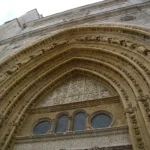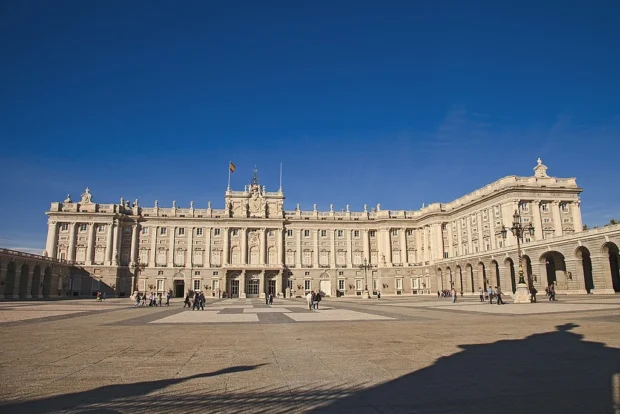Nestled in the heart of Madrid, the Royal Palace (Palacio Real) stands as an eloquent testament to Spain’s rich heritage and artistic grandeur. This regal edifice captivates architects, historians, and curious travelers alike with its vast halls, intricate artistry, and storied past. As a centerpiece of Spanish culture, the palace offers a unique glimpse into royal life, Spanish architecture, and the evolution of European court styles. This article presents practical guidance for visitors combining ease of access, timing secrets, and historical insights that bring this magnificent monument to life.
Table of Contents
The Royal Palace’s Architectural Masterpiece
The Royal Palace of Madrid spells a remarkable story in stone, marble, and gold leaf. Conceived in the mid-18th century after the devastating fire of the old Alcázar, it was designed primarily by architect Filippo Juvarra, later completed by Giovanni Battista Sacchetti. The structure blends Baroque formality with neoclassical refinement, embodying proportion and balance akin to a grand symphony in stone.
The palace’s exterior façade stretches over 135,000 square meters with an imposing colonnade and ornate balustrades that frame its monumental presence. Its interior features stunning frescoes, elaborately carved wooden ceilings, and exquisite tapestries crafted from workshops across Europe. Among its most famous rooms are the Throne Room, adorned with frescoes by Giovanni Battista Tiepolo, and the Royal Pharmacy showcasing 18th-century apothecary jars, reflecting the palace’s role as a living, functioning royal residence.
For another striking example of Spanish architecture, the Plaza de España in Seville offers a fascinating blend of styles and rich cultural symbolism.
Design Evolution and Artistic Influences
What makes the Royal Palace architecturally gripping is how it embodies transitions in style-Baroque exuberance gives way to Classical restraint, echoing contemporaneous European shifts in taste and power. Each room generates an atmosphere, from lavish Rococo salons to solemn, richly paneled chambers. This granularity allows visitors to follow Spain’s artistic dialogue with Italy, France, and beyond during the Enlightenment era.
For those fascinated by grand religious architecture, St. Peter’s Basilica in Vatican City offers a profound journey into Renaissance and Baroque artistry.
Finding Your Way To The Royal Palace
Located adjacent to the historic Plaza de Oriente and bordering the lush Sabatini Gardens, the Royal Palace is accessible and well integrated into Madrid’s vibrant urban fabric. For travelers arriving at Madrid-Barajas Airport, the palace lies approximately 20 kilometers southwest and is reachable by several transport options:
For those fascinated by royal residences, the Buckingham Palace in London presents a contrasting yet equally captivating story of monarchic design and ceremony worth exploring.
- Metro: Take Line 8 from the airport to Nuevos Ministerios, then transfer to Line 10 towards Puerta del Sur, exiting at Ópera station – a short 5-minute walk to the palace.
- Bus: EMT Lines 147 and 148 connect the airport to central Madrid stops, with a convenient walk from Plaza de España or Ópera.
- Renfe Train: Madrid’s main train stations, Atocha and Chamartín, connect to Ópera station via metro within 20–30 minutes.
Upon arrival, the palace stands proudly on Calle de Bailén. Nearby lodging options cater to diverse budgets and often situate visitors within a scenic stroll to other key sights such as the Almudena Cathedral and the lively Mercado de San Miguel, offering authentic local food experiences.
Timing Your Visit for an Optimal Experience
The Royal Palace is an immensely popular destination, often bustling with groups and tourists. To enjoy the silent charm and uninterrupted grandeur, arrive early mornings or late afternoons, especially on weekdays when crowds are thinner. Avoid weekends and Spanish public holidays when the palace receives significantly more visitors.
Spring (April to June) and autumn (September to November) provide not only milder weather but also the palace gardens in splendid condition, enhancing the contemplative stroll around the complex. The palace closes on public holidays like Christmas and New Year’s Day, so checking the schedule on the official site before planning is essential.
Best Days and Hours To Visit
- Opening Hours: Tuesday to Sunday, 10:00 AM to 6:00 PM, with last admission at 5:00 PM.
- Closed: Mondays and January 1st, May 1st, and December 25th.
- Sunset Visits: The late afternoon light softens the palace’s façade, ideal for photography enthusiasts.
Reservations and Guided Tours Essentials
Due to its prominence, visiting the Royal Palace generally requires ticket reservation, especially during peak seasons. Booking online guarantees entry without the hassle of long queues. Tickets grant access to the palace interiors, Royal Armoury, and Royal Pharmacy. Specialized tours, including audio guides or guided group tours, enrich understanding of the palace’s context, symbolism, and craftsmanship details.
Visitors eager to delve deeper into architectural narratives should opt for guided tours focusing on the palace’s construction phases and artistic patronage. Tours often reveal anecdotes such as the strategic location of the palace on the site of former Moorish fortifications and the palace’s role in transitioning Madrid’s cityscape into a European capital.
Nearby Attractions and Culinary Delights
After absorbing palace splendor, take time to enjoy Madrid’s culinary scene. Close to the Royal Palace lies Mercado de San Miguel, a bustling food market with tapas from various Spanish regions. Nearby eateries offer traditional dishes like cocido madrileño (a hearty chickpea stew) and torrijas (Spanish-style sweet toast), perfect preparations to recharge your energies.
Art lovers will appreciate the proximity of the Prado Museum and Reina Sofía Museum, within easy walking distance. Spend a day weaving architectural observation with artistic immersion, taking in fortifications, gardens, and urban vitality that define Madrid.
Additional Visitor Tips and Quirky Facts
- Do not miss the palace’s formal gardens, the Sabatini and Campo del Moro, both crafted in contrasting styles-the former geometric, the latter naturalistic, illustrating 19th-century landscaping trends.
- Keep your camera ready: the palace guard change ceremony is a theatrical display of precision worth witnessing.
- The Royal Armoury hosts one of the world’s most extensive collections of weapons, including pieces from the time of Emperor Charles V, offering insights into the intersection of craftsmanship and military technology.
- Though the palace is the king’s official residence, it’s primarily a ceremonial space; the current royal family lives in the more modest Zarzuela Palace on Madrid’s outskirts.
Plan your visit and book your tickets to secure the best experience and updated visitor information.

- Madrid. Royal Palace. Spain (4083783003) by Tomás Fano on Wikimedia Commons – cc by-sa 2.0
